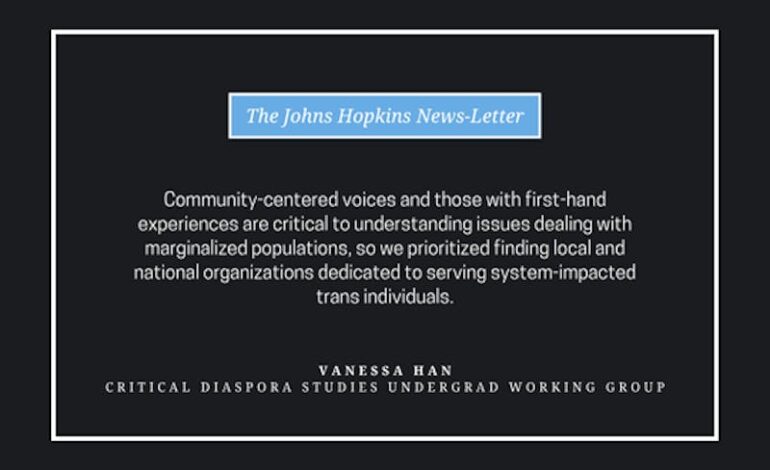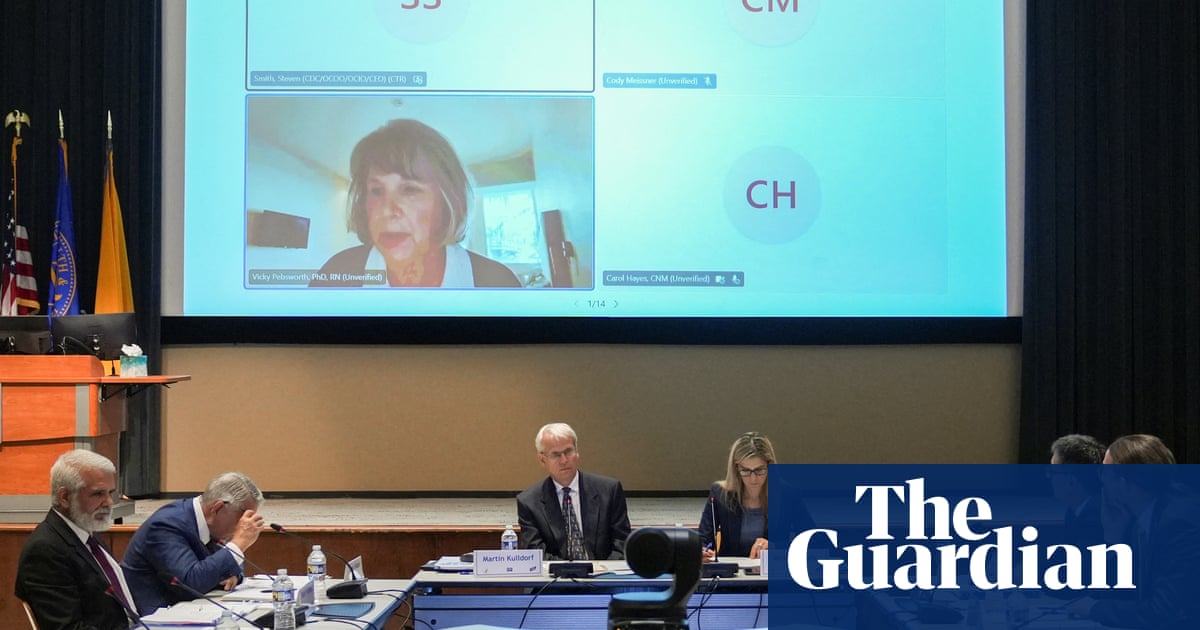Panel Discusses Transgender Justice in Carceral Systems

On October 8, 2025, the Critical Diaspora Studies undergraduate working group at Johns Hopkins University hosted a panel discussion focused on transgender justice within the carceral system. The event aimed to shed light on the unique challenges faced by transgender individuals in the context of incarceration. Hailey Saya Tomlinson, a senior majoring in Sociology and International Studies, moderated the panel, which included Dr. Nicole Morse, Dr. Vesla Weaver, and Arianna Lint.
Panelists Share Insights and Experiences
Dr. Morse, a professor at the University of Maryland Baltimore County, is recognized for their research on media studies and LGBTQ+ identity. They are currently working on a book titled Bending the Bars: Queer Conspirators Against Carcerality, which examines the experiences of queer individuals impacted by the carceral system and their use of media as a tool to challenge oppression. Dr. Weaver, a professor of Political Science and Sociology at Hopkins, has extensively studied the intersection of race and incarceration in the United States. She co-directs the American Prison Writing Archive and has authored several influential books on the subject. Lint, a transgender educator and advocate, is the CEO of Arianna’s Center, an organization in Florida that supports transgender women of color.
Reflecting on the selection of panelists, senior Vanessa Han noted in an email to The News-Letter, “Community-centered voices and those with first-hand experiences are critical to understanding issues dealing with marginalized populations.” The inclusion of scholarly insights aimed to bridge the gap between academic discourse and community realities.
Challenges Faced by Transgender Individuals
During the discussion, Lint addressed her work providing HIV and AIDS care for incarcerated individuals, highlighting the impact of the political climate on funding and resources. She mentioned that her organization had to close its housing program for transgender individuals living with HIV due to reduced financial support from the previous administration.
Dr. Morse shared personal anecdotes, including their previous marriage to a prison guard and their journey toward activism inspired by the Black and Pink program. They emphasized the harsh realities faced by transgender individuals in prisons, particularly the practice of placing trans women in men’s facilities, often resulting in solitary confinement to prevent violence. “Solitary confinement for longer than 15 days is classified as torture,” they stated, urging solidarity with incarcerated individuals.
Weaver contributed to the conversation by pointing out that understanding the carceral system is essential to comprehending broader themes of government power and community value. She argued that the government often neglects preventative measures that could reduce crime, leading to an over-reliance on incarceration.
As the discussion progressed, Tomlinson asked Lint about the implications of U.S. Immigration and Customs Enforcement (ICE) policies on her work with transgender immigrants. Lint expressed concern that many individuals fear using available resources due to the potential for detention. “The most sad [thing] is when founders and people in power don’t listen to us,” she lamented.
Connecting Archival Work to Advocacy
Weaver highlighted the importance of first-person narratives in understanding the prison experience, noting that statistics often fail to capture the full scope of individual stories. She lamented that incarcerated individuals are frequently excluded from measures of national well-being, such as employment rates, suggesting a disconnect between government actions and the needs of affected populations.
The panel concluded with an audience Q&A session, where attendees raised questions about the future of carceral justice and the role of advocacy. One participant, Sebastian Witherspoon, asked how advocates could reconcile differing views on prison abolition versus reform. Weaver cited past litigation efforts that intended to improve prison conditions but ultimately resulted in increased incarceration rates. Despite these challenges, she noted a success in the closure of numerous juvenile facilities due to grassroots movements.
Another attendee, Sam Bessen, raised concerns about balancing visibility for the queer community with the risks of surveillance in the current political climate. Weaver acknowledged this tension but affirmed the necessity of maintaining records to document historical injustices. “We are vulnerable. Does that mean that I’m going to stop talking about incarceration? No,” she stated.
In closing, Tomlinson provided resources for those looking to engage further with transgender and carceral justice, including organizations like the Trans Rights Advocacy Coalition and Trans Maryland. Vanessa Han expressed hope that the event would inspire greater awareness and involvement among attendees, stating, “We hope audience members will become more engaged through community efforts and research projects.”






